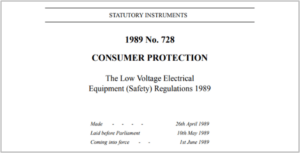We are a leading manufacturer of quality internal and external lighting products for commercial, industrial and retail applications.
View all productsAt Ansell Lighting we design and manufacture an extensive range of luminaires for a diverse number of sectors and applications. Whatever the shape, purpose or style of your space, we have a lighting solution.
View all sectors & applicationsWe are a leading manufacturer of quality internal and external lighting products for commercial, industrial and retail applications.
Welcome to Ansell lightingWe are here to answer any questions you may have, help you find a stockist or speak to a local member of our team.
OCTO delivers the complete smart lighting package to transform the efficiency and ambience of commercial and residential spaces.
Find information regarding our product warranty, product data downloads and FAQs regarding lighting and technical terms. Here you will find support with training CPDs as well as useful lighting design and LED strip calculators.
What does the term ‘Electrical Class’ mean and how will it provide protection against electrical shock?

In basic terms, the ‘Electrical Class’, indicates to the installer and to the user, how the product will protect them against the risk of electrical shock and the term ‘Electrical Class’, also referred to as ‘Appliance Class’, ‘Electrical Appliance Class’, or ‘Protection Class’, is defined by the International Electrotechnical Commission (IEC) within the international standard, IEC 61140:2016 on the ‘Protection against electric shock – Common aspects for installation and equipment’ as well as within the BSI standard, of the same number, as published on electrical protection, BS EN 61140:2016.
There are four different classes of protection, namely Class 0, Class I, Class II, and Class III, however only three are in common use, with the other being prohibited from use.

CLASS 0
Class 0 products do not have protective-earth connection and feature only single level of insulation between the live parts of the circuit and any exposed metalwork. If this class is ever permitted at all, products are intended only for use in dry locations, as a single fault could cause an electric shock or other dangerous occurrence, without triggering the automatic operation of any fuse or circuit breaker. The sale of a Class 0 product into the marketplace has been prohibited in much of the world for safety reasons and most specifically within the UK, where all products have been completely prohibited for sale under Section 8 of The Low Voltage Electrical Equipment (Safety) Regulations 1989.

CLASS 1
Class 1 equipment is that for which protection against electric shock does not rely on basic insulation only, but which includes an additional safety precaution in that accessible conductive parts are connected to the protective earthing conductor in the fixed wiring of the electrical installation in such a way that accessible parts cannot become live in the event of a failure of the basic insulation. All metal parts of the product must be connected to the earth cable, or ‘Earthed’, as it is termed, so that if any live conductor comes into contact with a metal part, or a fault causes a live connection to the metal part, the earth connection will ensure that the circuit protection, such as a Fuse, RCD and/or MCB is activated, thus isolating the product from the mains supply and making the product safe. An Earth cable is to be clearly identified using the recognised green and yellow colouring on the sleeving. Class I equipment may have parts with double insulation or parts operating at SELV. For equipment intended for use with a flexible cord or cable, this provision includes a protective earthing conductor as part of the flexible cord or cable.
Class I equipment shall be marked with the graphical symbol of IEC 60417-5019 – (Alternative of letters ‘PE’)
CLASS II
Class II equipment in that for which protection against electric shock does not rely on basic insulation only, but in which additional safety precautions such as double insulation or reinforced insulation are provided, there being no provision for protective earthing or reliance upon installation conditions and is why these products are often known as being “double-insulated” appliances. Such equipment may be one of the following types,
(a) equipment having durable and substantially continuous enclosures of insulating material which envelops all metal parts, except for small parts, such as nameplates, screws, and rivets, which are isolated from live parts by insulation at least equivalent to reinforced insulation. Such equipment is called insulation-encased Class II equipment,
(b) equipment having a substantially continuous metal enclosure, in which double insulation is used throughout, except for those parts where reinforced insulation is used, because the application of double insulation is manifestly impracticable. Such equipment is called metal-encased Class II equipment,
(c) equipment that is a combination of the types described in items (a) and (b). The enclosure of insulation-encased Class II equipment may form part of the whole of the supplementary insulation or of the reinforced insulation.
If the equipment with double insulation or reinforced insulation throughout has an earthing terminal or earthing contact, it is considered to be of Class I construction. Class II equipment may be provided with means for maintaining the continuity of protective circuits, insulated from accessible conductive parts by double insulation or reinforced insulation. Class II equipment may have parts operating at SELV.
Class II equipment shall be marked with the graphical symbol of IEC 60417-5172 – (Double Square)
CLASS III
Class III equipment in that for which protection against electric shock relies on supply at a Separated Extra Low Voltage (SELV) and in which voltages higher than those of SELV are not generated. The equipment intended to be operated at SELV and which have internal circuits that operate at a voltage other than SELV are not included in the classification and are subject to additional requirements. These products which are supplied by a SELV power supply, means that the product does not receive a voltage high enough to cause or create an electric shock, therefore the safety features built into Class I and Class II products are not required. Equipment voltages shall be designed to provide a maximum nominal voltage not exceeding 50 Volts A.C. or 120 Volts D.C. (Ripple-Free)
Class III equipment shall be marked with the graphical symbol of IEC 60417-5180 – (Roman numeral ‘III’ in a diamond)

Technical Notes:
Double Insulation is insulation comprising both basic insulation and supplementary insulation.
Earthing is a protection method against electric shock.
Extra Low Voltage (ELV) is an electrical circuit in which electrical potential between conductor/electrical conductor and Earth (Ground) does not exceed the relevant voltage limit of 50 Volts A.C. or 120 Volts D.C. (ripple-free).
Separated Extra Low Voltage (SELV) is an extra low voltage electrical circuit, in which the voltage should not exceed ELV under normal conditions, or under single-fault conditions including earth faults in other circuits. It is electrically separated from earth and from also from other circuits of higher voltages in such a way that a single fault cannot give rise to an electric shock.
Ripple-Free – The ripple component is the residual variation of the D.C. voltage within the power supply which is derived from an A.C. source and is the incomplete suppression of the alternating current waveform following rectification.